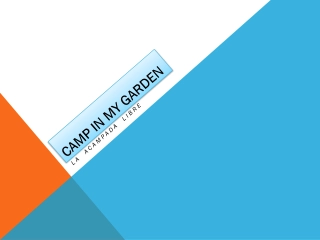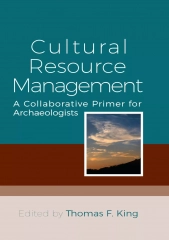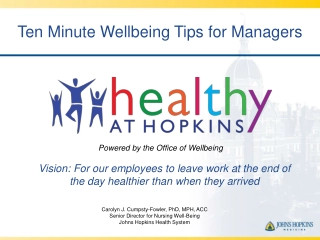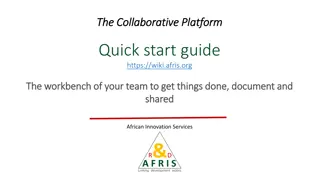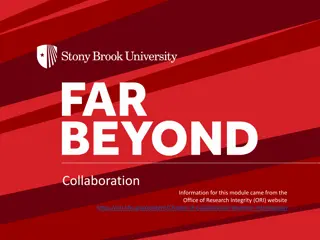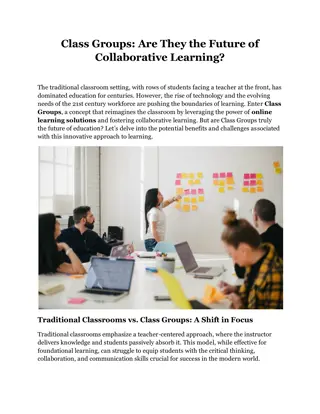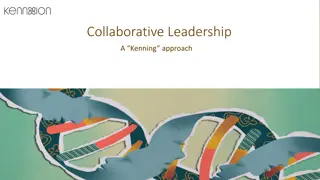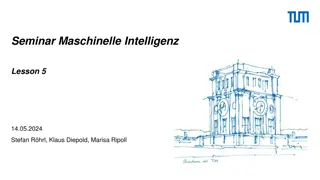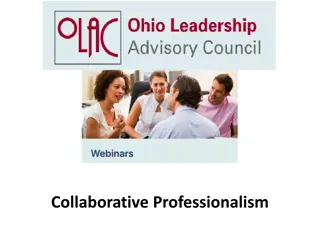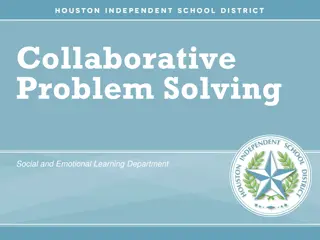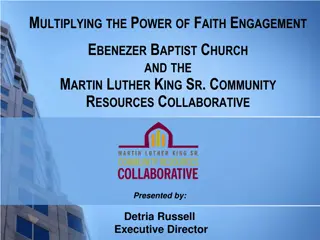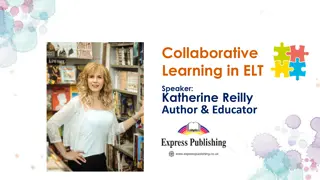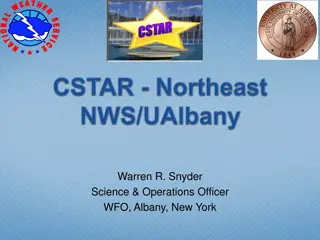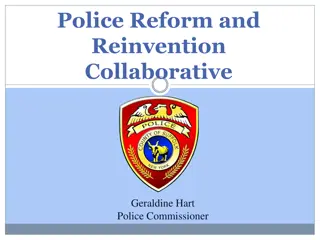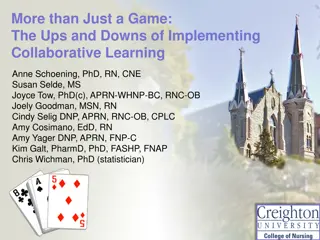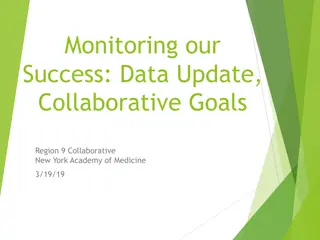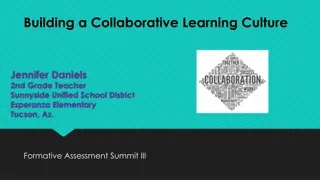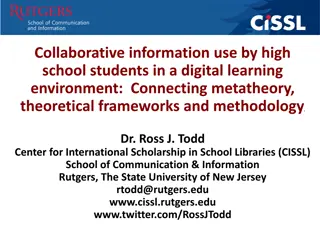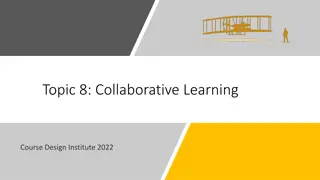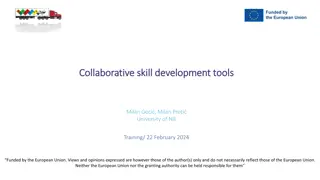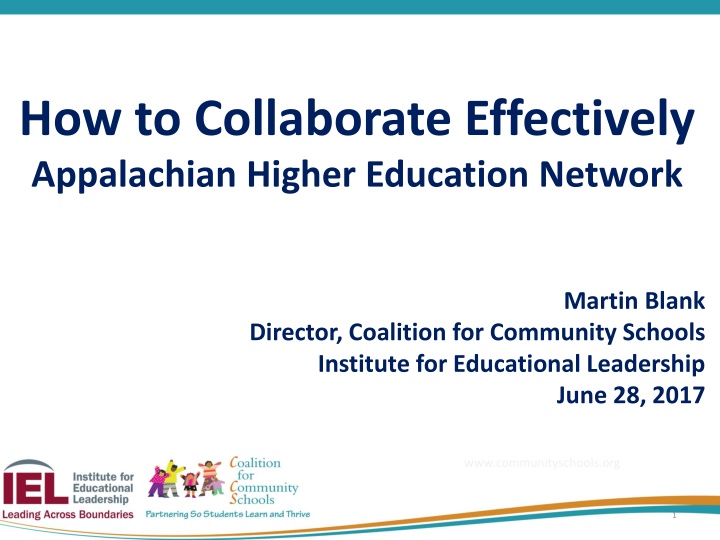
Effective Collaboration Strategies in Higher Education Networks
Explore the essence of collaboration in a rapidly changing environment, the significance of leadership across boundaries, and the distinction between cooperation and collaboration. Learn about the keys to successful collaboration and the Collective Impact Framework.
Download Presentation

Please find below an Image/Link to download the presentation.
The content on the website is provided AS IS for your information and personal use only. It may not be sold, licensed, or shared on other websites without obtaining consent from the author. If you encounter any issues during the download, it is possible that the publisher has removed the file from their server.
You are allowed to download the files provided on this website for personal or commercial use, subject to the condition that they are used lawfully. All files are the property of their respective owners.
The content on the website is provided AS IS for your information and personal use only. It may not be sold, licensed, or shared on other websites without obtaining consent from the author.
E N D
Presentation Transcript
How to Collaborate Effectively Appalachian Higher Education Network Martin Blank Director, Coalition for Community Schools Institute for Educational Leadership June 28, 2017 www.communityschools.org 1
Context for Collaboration In a tumultuous swiftly changing environment, in a world of multiple colliding systems, the hierarchical position of leaders within their own system is of limited value, because some of the most critically important tasks require lateral leadership -- cross boundary leadership --involving groups over whom they have no control.
Context for Collaboration (2) Leaders who do not collaborate are not serving the long-term interests of their constituents. Leaders must live harmoniously with the systems that impinge on their institution. Leaders work across boundaries not only to achieve the goals of their own system, but to help our communities and our nation to survive and flourish.
What is Collaboration? Collaboration: An unnatural act among consenting adults Collaboration: Entities recognize none can succeed without others. Each has unique capabilities others need. Collaboration: Tailor made for needs, problems, and opportunities that manifest novelty, complexity, uncertainty, and interdependent relationships.
Cooperation v. Collaboration Partners using a cooperative strategy to work together to meet their individual goals. Partners using a collaborative strategy establish common goals and agree to their personal and institutional power to achieve them.
Your Turn: What does collaboration mean to you?
Keys to Collaboration Right People at the Table Trusting Relationships Open Communications Jointly defined results/indicators Shared data Effective Leadership Shared Decision-Making Shared Power and Authority
Collective Impact Framework Common Agenda Measuring Results Consistently Mutually Reinforcing Activities Continuous Communications Backbone Organization
Your Turn: What have been the keys to successful collaboration in your experience
Community School Contribution Relationships (and associated measurement) School District (Performance measures) Community Quality of Life (indicators) Partners include: Parents Families Health Mental Health Recreation Youth Development Higher Education Museums Libraries United Way Businesses Media etc. Community School Measures (How much? How well? Better off?) Attendance Reading & Math proficiency Grades Health/wellness Risk/Protective factors Family relations Social & Emotional Competencies etc. School Partners (Performance Measures) (Performance Measures) FPSI Performanc e Measure Baseline = = = Contribution
How well did we do it? % Common Measures workload ratio, staff turnover, staff morale, percent of staff fully trained, worker safety, unit cost, customer satisfaction. How much did we do? # Customers Served (by customer characteristic) Performance Measures % Activity-Specific Measures Percent of actions timely and correct, percent clients completing activity, percent of actions meeting standards #Activities (by type of activity) Is Anyone Better Off? % skills and knowledge % attitude/opinion Including customer satisfaction (did we help you with your problem?) # skills and knowledge # attitude/opinion # behavior # circumstance % behavior % circumstance
Customers Performance Measures Baselines How much do we do? How well did we do it? Is anyone better off? (Data Development Agenda) Performance Accountability Story Behind the Baselines (Information and Research Agenda about Causes) Partners What Works Criteria (Information and Research about Solutions) Strategy and Action Plan
How to Collaborate Effectively What s Your Next Step? www.communityschools.org 14
Thank you! Martin Blank Director, Coalition for Community Schools Institute for Educational Leadership BlankM@iel.org 202-822-8405 x 140 www.communityschools.org 15

